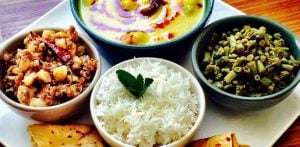Natural dyes are biodegradable and less polluting.
South Asia’s rich textile heritage is witnessing a vibrant resurgence as traditional dyeing techniques regain popularity among fashion enthusiasts and artisans alike.
These age-old crafts, rooted in thousands of years of history, carry stories of cultural identity, sustainable practice, and artistic mastery.
With growing global interest in eco-friendly fashion, South Asian natural dyes and methods are reclaiming their place on the world stage.
From the deep indigos to intricate Bandhani patterns, these techniques are much more than decorative arts. They are living legacies.
This revival not only celebrates heritage but also offers a path towards more responsible and beautiful textiles.
Let’s explore how these time-honoured dyeing traditions are making a significant comeback.
Ancient Origins and Global Influence
 The story of South Asian dyeing begins over 4,000 years ago, with archaeological finds from the Indus Valley Civilisation revealing cloth dyed with madder root.
The story of South Asian dyeing begins over 4,000 years ago, with archaeological finds from the Indus Valley Civilisation revealing cloth dyed with madder root.
Mohenjo-Daro, dating around 2000 BCE, provides some of the earliest evidence of advanced dyeing methods.
Indigo, another prized dye from India, became a coveted export, spreading its influence as far as Egypt and the Mediterranean.
This trade helped shape textile cultures worldwide, embedding South Asian dyes in global history.
These ancient connections demonstrate the region’s longstanding role in pioneering natural dyeing techniques.
Understanding these origins highlights the deep cultural roots behind today’s revival.
Signature Natural Dyes and Their Sources
 Traditional South Asian dyes come from a diverse range of botanical and insect sources, each producing unique and vibrant colours.
Traditional South Asian dyes come from a diverse range of botanical and insect sources, each producing unique and vibrant colours.
Indigofera tinctoria, the plant behind the famous indigo blue, was historically used to dye fabrics, including the earliest forms of denim.
Madder root imparts rich reds and burgundies, while turmeric and safflower offer sunny yellows, though these tend to fade more quickly.
Acacia bark and the fruit of the myrobalan tree provide shades of brown and black, and lac insects produce deep burgundy hues.
Many modern artisans still use these natural ingredients, sometimes blending them with Ayurvedic plants to create distinctive, sustainable palettes.
This commitment to natural dyes preserves ecological balance and artistic integrity.
Iconic Techniques: Bandhani and Kalamkari
 Among South Asia’s signature dyeing methods, Bandhani and Kalamkari stand out for their beauty and craftsmanship.
Among South Asia’s signature dyeing methods, Bandhani and Kalamkari stand out for their beauty and craftsmanship.
Bandhani, one of the world’s oldest resist-dyeing traditions, involves painstakingly tying tiny knots in fabric before dyeing, creating intricate dot patterns.
Its origins trace back as far as 4000 BCE, demonstrating incredible cultural continuity.
Kalamkari, on the other hand, is a form of hand-painting or block-printing with natural dyes, historically used for storytelling textiles and large tapestries.
This method became a major export during the medieval and colonial eras, prized for its detailed narrative motifs.
Both techniques demand exceptional skill, reflecting the dedication of the artisans who keep these traditions alive today.
Craftsmanship and Sustainability
 Natural dyeing and handloom weaving are inherently labour-intensive, requiring deep knowledge and precision that resist mechanisation.
Natural dyeing and handloom weaving are inherently labour-intensive, requiring deep knowledge and precision that resist mechanisation.
This craftsmanship not only preserves the cultural value of the textiles but also ensures each piece is unique due to natural variations in dye sources and handcrafting methods.
The global shift towards sustainable fashion has further highlighted these techniques, as consumers seek alternatives to chemically intensive synthetic dyes.
Natural dyes are biodegradable and less polluting, aligning with environmental priorities.
This growing awareness has reignited interest in plant-based textiles, positioning traditional South Asian dyeing as a beacon of eco-conscious artistry in a modern world.
Contemporary Revival and Innovation
 Today, designers and brands worldwide are collaborating with South Asian artisans to reimagine traditional dyeing for contemporary fashion.
Today, designers and brands worldwide are collaborating with South Asian artisans to reimagine traditional dyeing for contemporary fashion.
Global names like Stella McCartney and Eileen Fisher champion natural dyes and handcrafting, creating collections that blend heritage with modernity.
Technological tools such as AI and 3D sampling assist artisans in adapting traditional textiles for new markets without compromising authenticity.
Workshops in regions like Tamil Nadu are experimenting with Ayurvedic dyeing methods, producing limited-edition collections that celebrate both innovation and tradition.
These collaborations not only enhance creativity but also expand the reach and appreciation of South Asia’s dyeing legacy.
Cultural and Social Significance
 Dyeing traditions are deeply entwined with regional identities and social rituals across South Asia.
Dyeing traditions are deeply entwined with regional identities and social rituals across South Asia.
Certain colours and patterns carry symbolic meanings, often reserved for festivals, weddings, or rites of passage.
By reviving these crafts, communities reaffirm their cultural heritage and strengthen social bonds.
Moreover, this resurgence supports rural economies and empowers women artisans, who form the backbone of many dyeing and weaving communities.
Preserving these intangible cultural assets enriches the cultural tapestry while providing sustainable livelihoods.
The revival is therefore about more than fashion. It is a vital cultural movement sustaining generations of knowledge.
Challenges and Opportunities
 Despite their beauty and cultural significance, natural dyes face challenges such as limited colour variety and lower durability compared to synthetic alternatives.
Despite their beauty and cultural significance, natural dyes face challenges such as limited colour variety and lower durability compared to synthetic alternatives.
However, their environmental benefits and authentic craftsmanship drive renewed consumer interest in slow, meaningful fashion.
The market for traditional dyeing is a niche but growing steadily, bolstered by conscious buyers who value ethical production.
Opportunities abound for scaling up without losing artisanal quality, especially through collaborations that respect tradition while embracing innovation.
The revival of South Asian dyeing techniques represents a hopeful balance between preserving heritage and meeting modern sustainability goals.
Traditional South Asian dyeing techniques, with their ancient origins and rich cultural significance, are experiencing a vibrant resurgence in today’s sustainable fashion landscape.
These methods blend artistry, heritage, and ecological mindfulness, offering unique alternatives to mass-produced textiles.
The revival benefits not only fashion but also the communities and artisans who uphold these crafts.
As awareness grows, natural dyes and iconic techniques like Bandhani and Kalamkari are reclaiming their rightful place in global textile culture.
Their comeback is a celebration of South Asia’s enduring creativity and commitment to sustainability, inspiring a more thoughtful and beautiful future in fashion.






























































